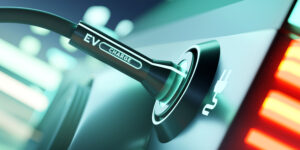Total loss frequency for electric vehicles (EV) continues to climb as prices for used EVs have fallen, according to a report issued by Mitchell, an Enlyte company.
The technology and information provider to the P&C industry issues its “Q1 2024 trends report: Plugged-In: EV Collision Insights,” highlighting EV total loss rates in the U.S and Canada, which came in at 9.93 percent and 7.48 percent, respectively.
The new figures represent an estimated increase of 8 percent from Q4 2023 and 30 percent from Q3 2023 in both regions.
Though it appears to be a dramatic rise, the report indicated EV total loss frequency remains in line with 2021 and newer ICE alternatives, which ended the quarter with a rate of 9.51 percent in the U.S. and 7.44 percent in Canada.
“Slowing new sales, manufacturer price reductions and changing consumer sentiment are impacting the value of used EVs,” explained Ryan Mandell, Mitchell’s director of claims performance. “As a result, the total loss frequency for collision-damaged EVs is increasing. However, it is also increasing for new gasoline-powered vehicles, which are comparable to EVs in terms of their complexity and cost to repair.”
There were additional claim differences between EVs and internal combustion vehicles (ICE) automobiles last quarter.
The average number of mechanical labor hours present on estimates for repairable vehicles was nearly twice as high for EVs as it was for ICE (3.04 versus 1.66 hours), adding to repair costs, Mitchell reported.
While average claims severity decreased in Q1, severity costs for EVs outpace ICE vehicles.
In the U.S., the report found the severity difference between the two powertrains was $1,363 or 29 percent ($6,066 versus $4,703) and in Canada it was $1,700 CAD or 33 percent ($6,810 versus $5,110 CAD).
Claims frequency continues to grow even as EV sales slow, rising to 2.26 percent in the U.S. and 3.41 percent in Canada. This represents an increase of 40 percent and 38 percent respectively over Q1 2023, the data showed.
Mitchell found that the lack of inventory of aftermarket and recycled parts means EV collision repairs are more likely to include original equipment manufactured (OEM) parts than those completed on ICE alternatives (89.29 percent versus 65.14 percent).
In addition, EV parts tend to be lighter weight to offset a heavier battery, making them more difficult to repair.
In Q1, the percentage of EV parts repaired versus replaced was nearly 13 percent and, for ICE automobiles, it was closer to 15 percent.





















 New Specialty Insurer Says Collector Car Owners Are Being Overcharged
New Specialty Insurer Says Collector Car Owners Are Being Overcharged  More Arrests Made in $8M Auto Theft Ring Bust
More Arrests Made in $8M Auto Theft Ring Bust  Reporter’s Notebook: ‘Nobody Else Does Telematics,’ Lemonade Exec Says
Reporter’s Notebook: ‘Nobody Else Does Telematics,’ Lemonade Exec Says  2025 Underwriting Profit and ‘Shop-a-Palooza’ Predicted for Auto Insurance
2025 Underwriting Profit and ‘Shop-a-Palooza’ Predicted for Auto Insurance 